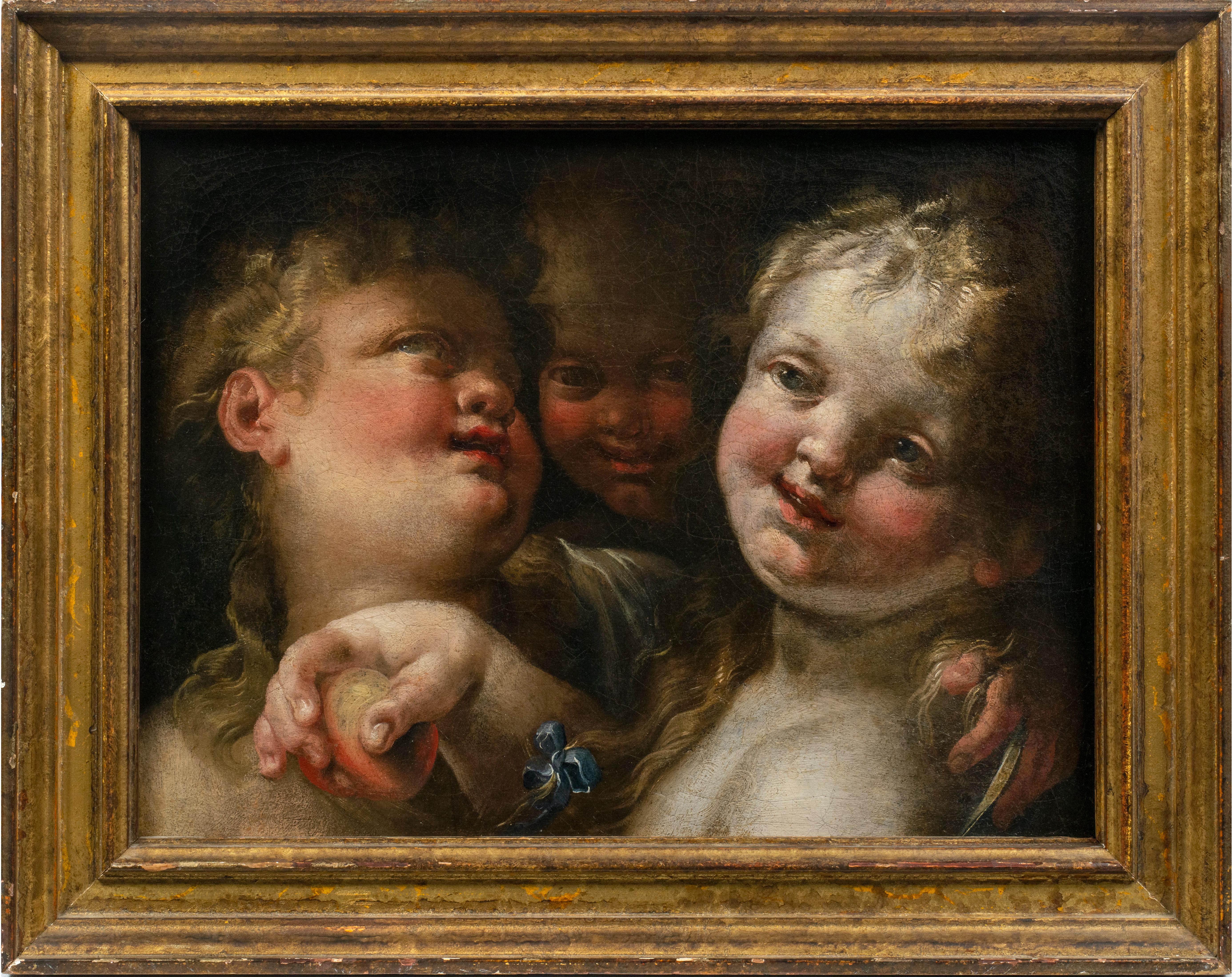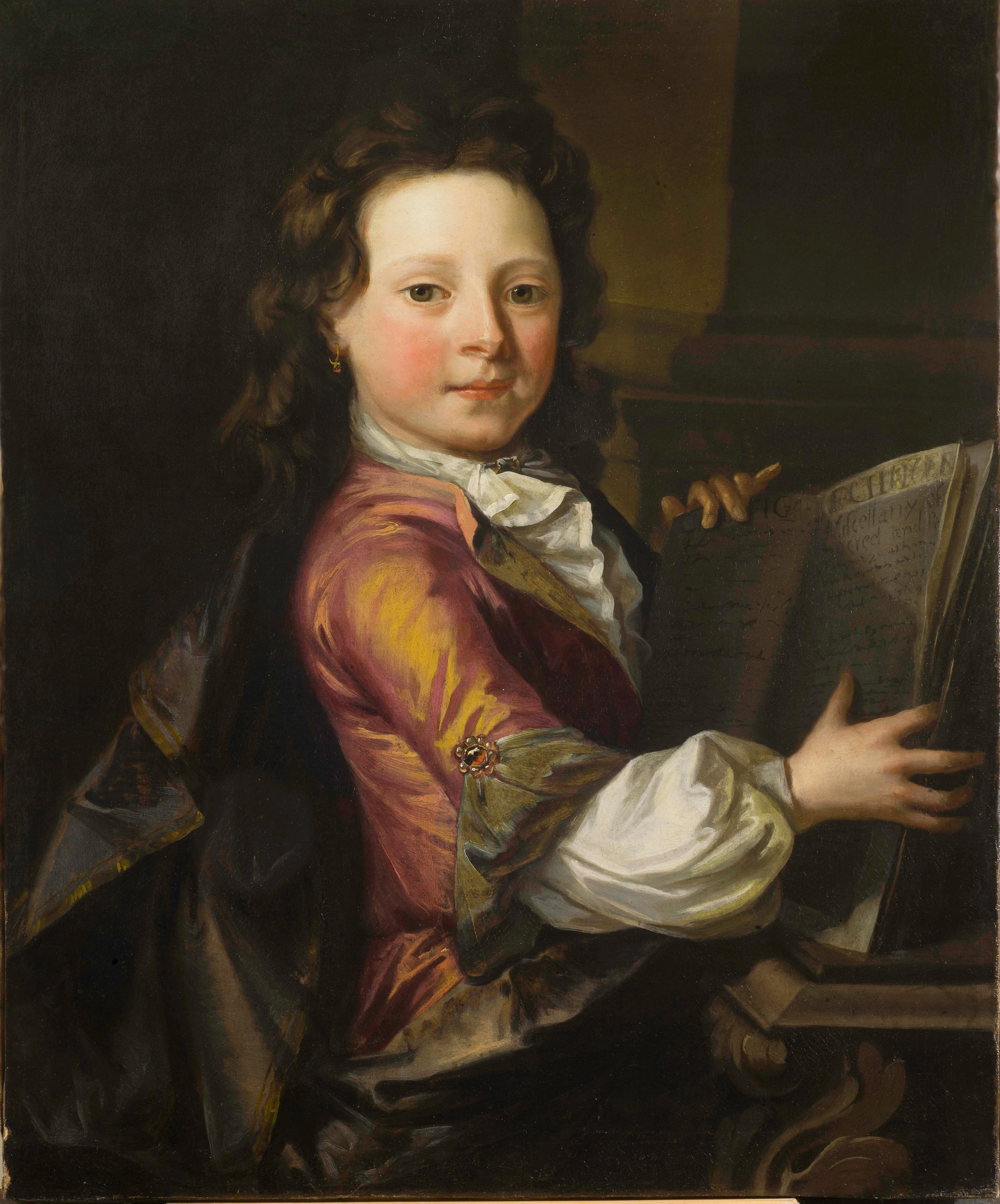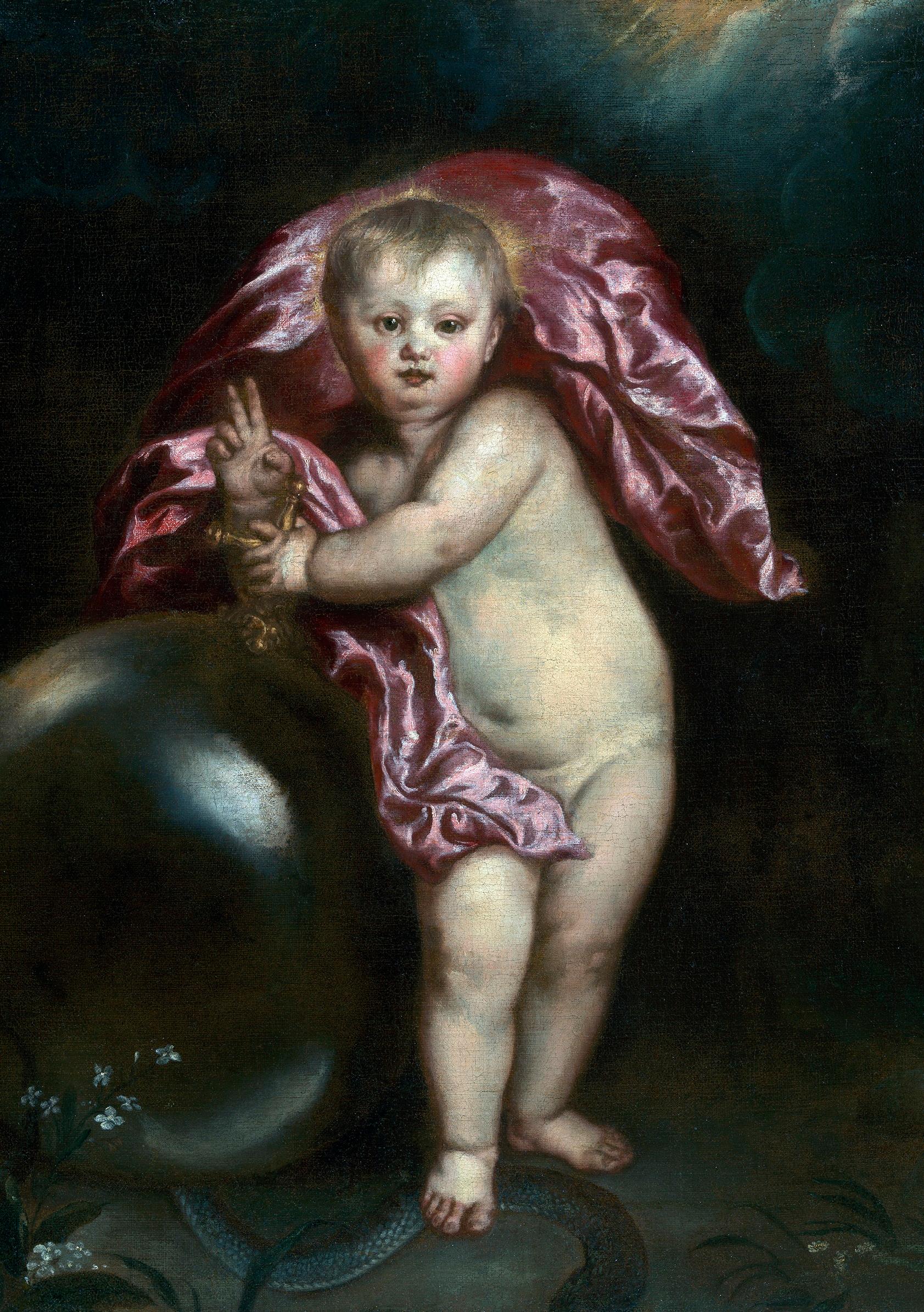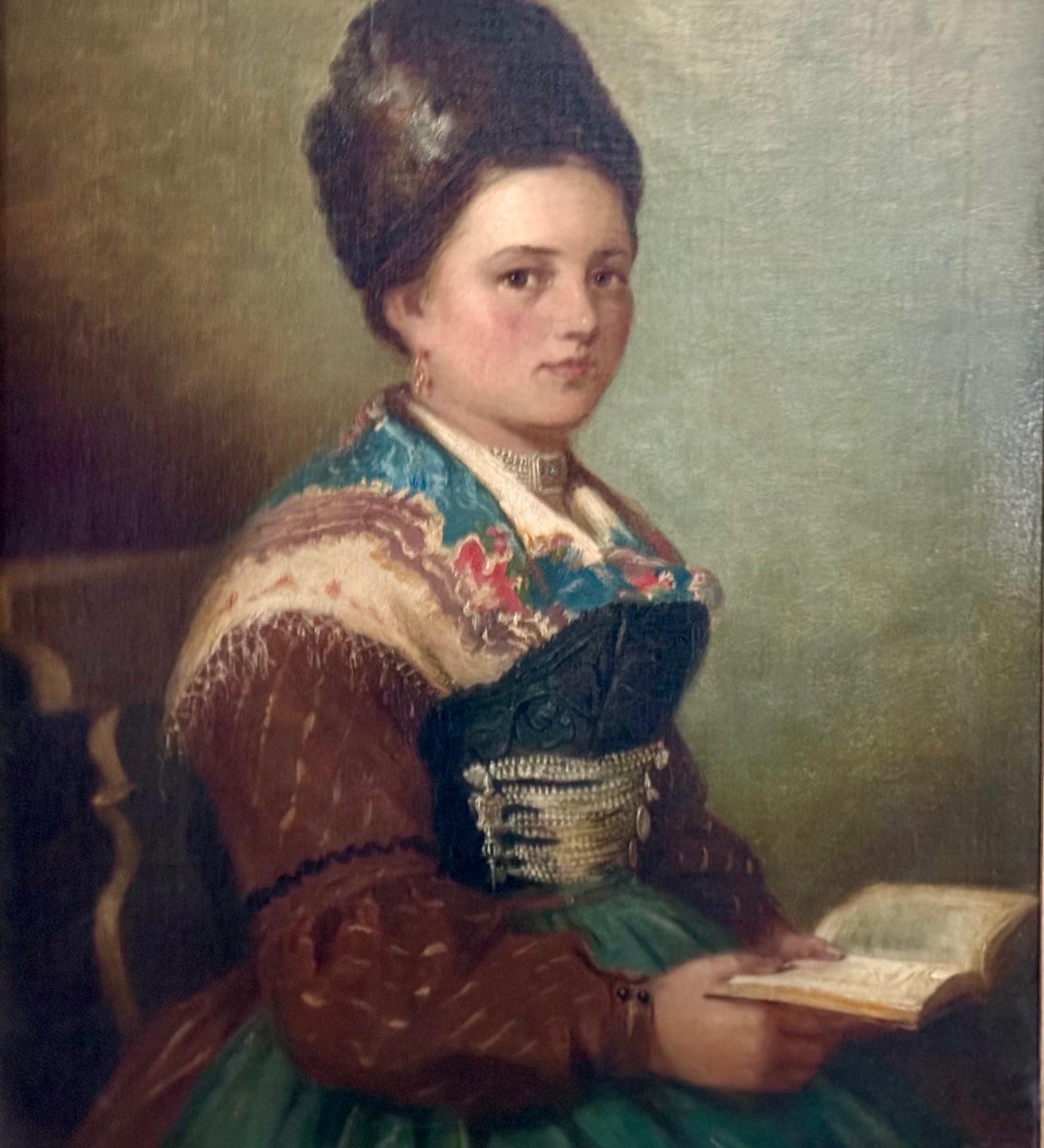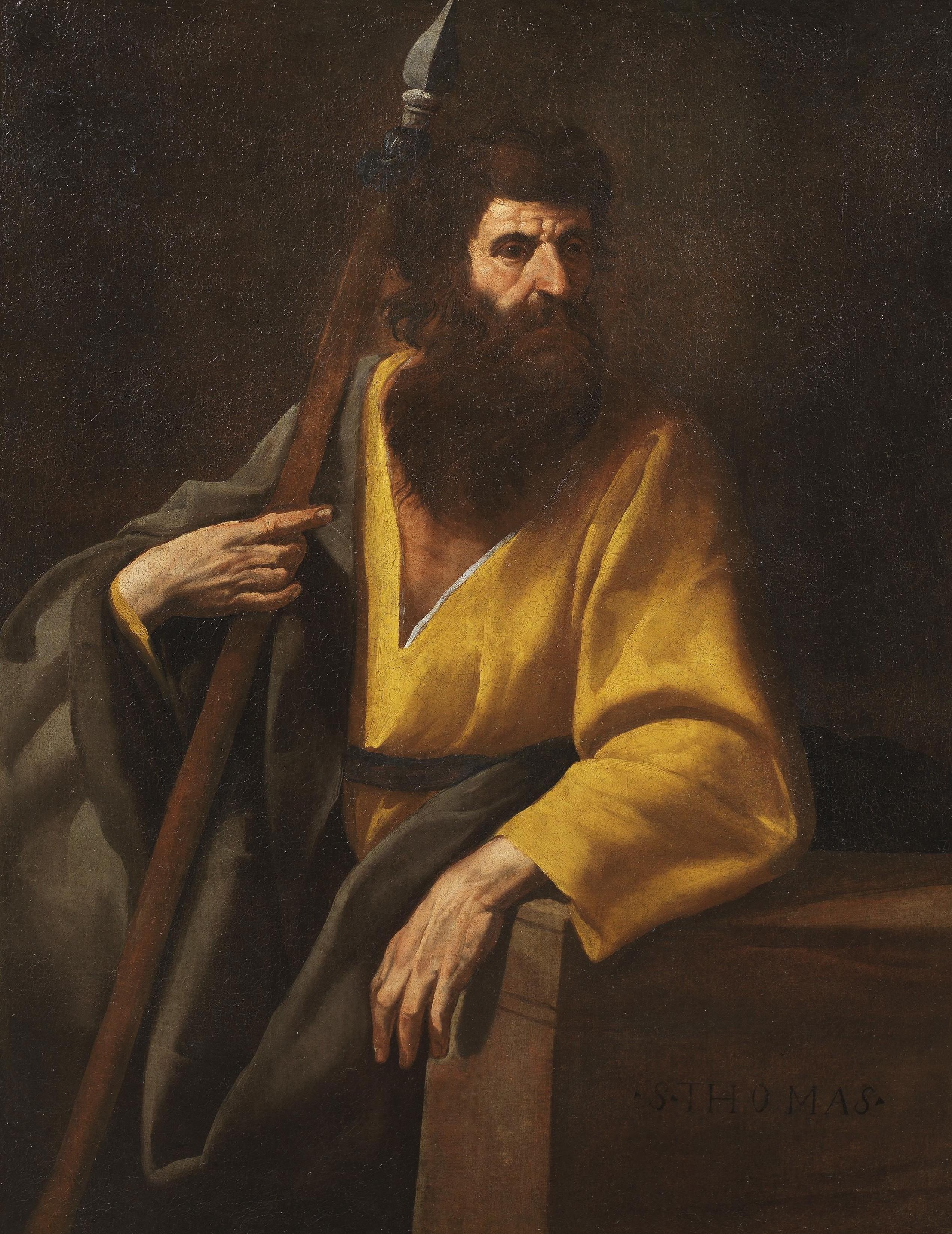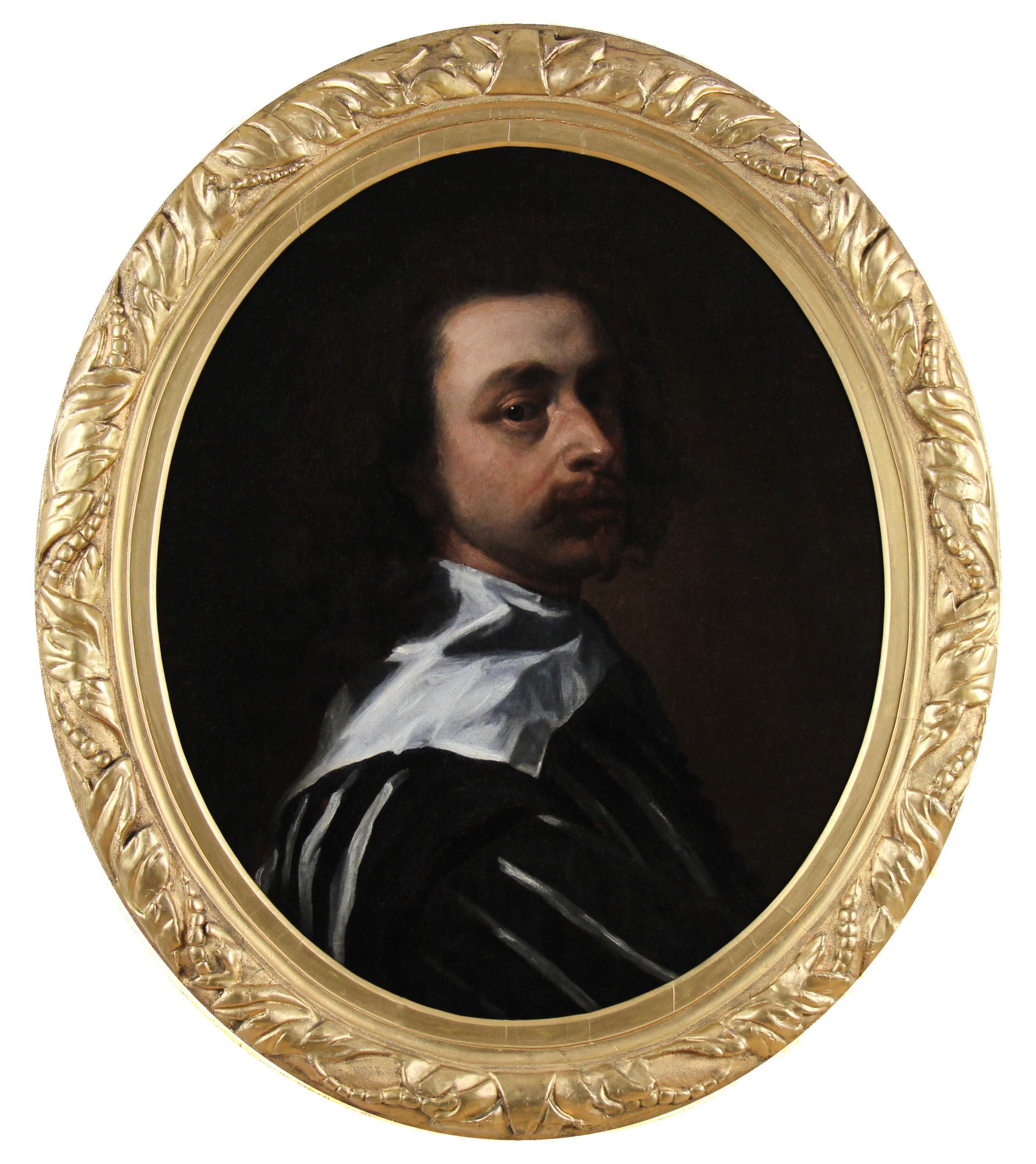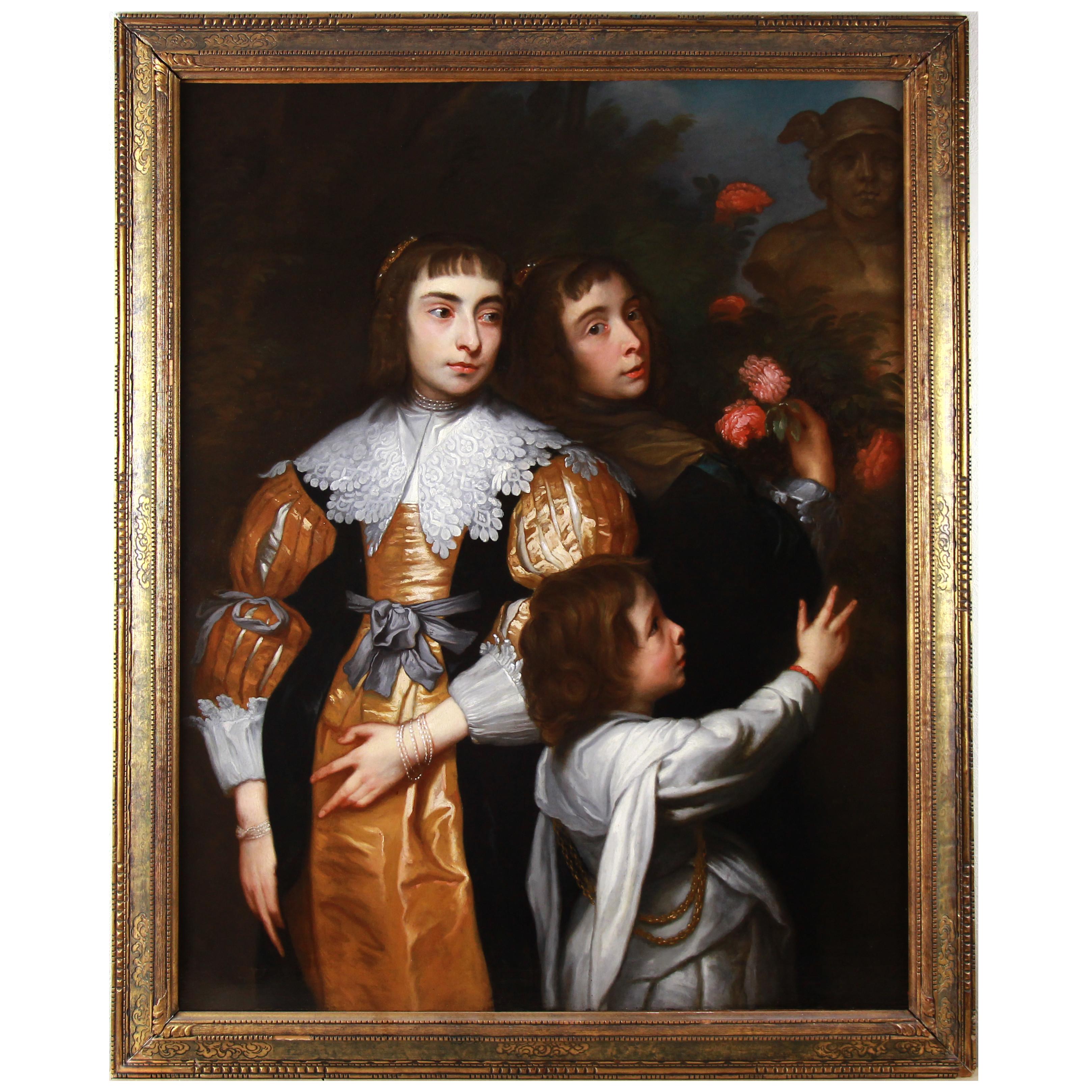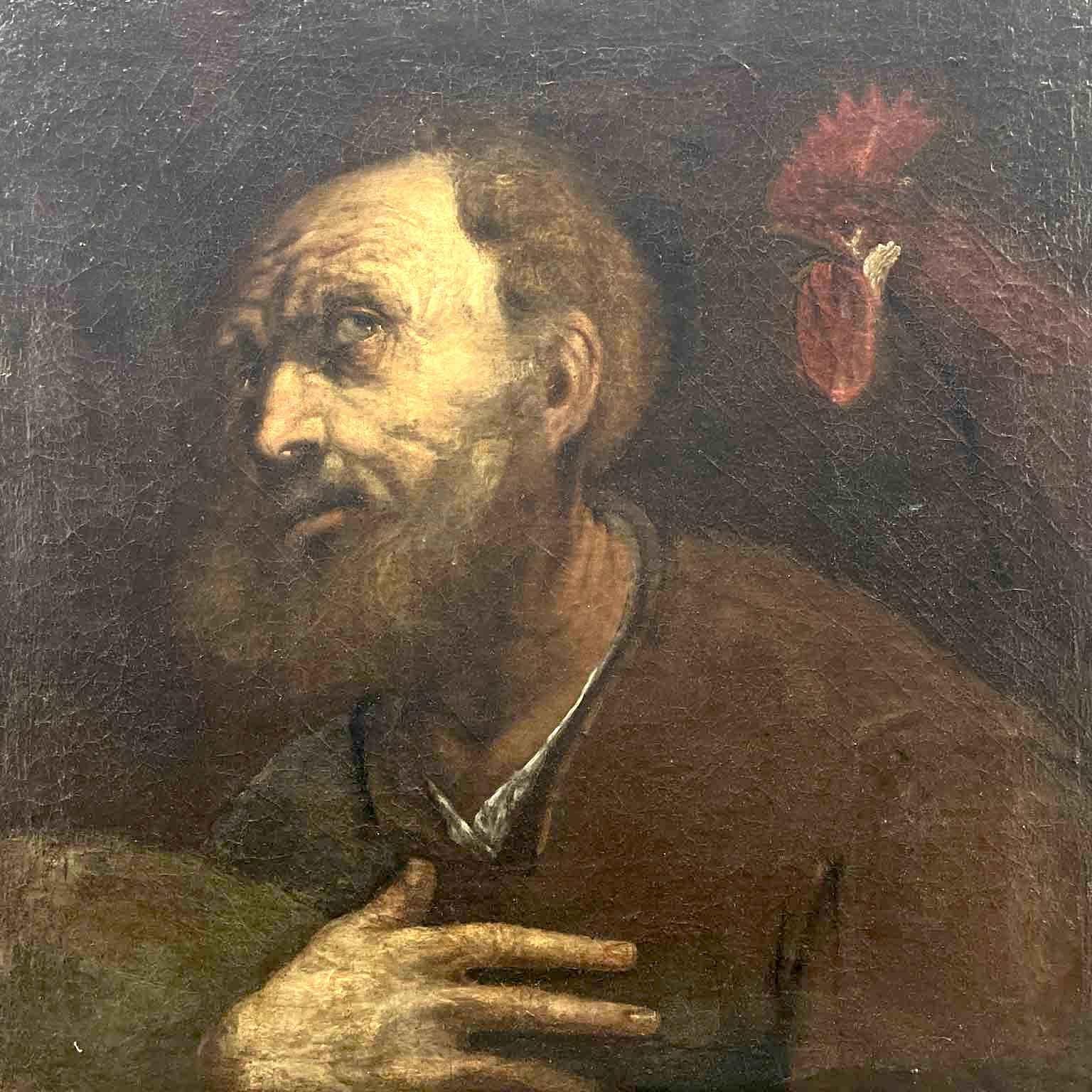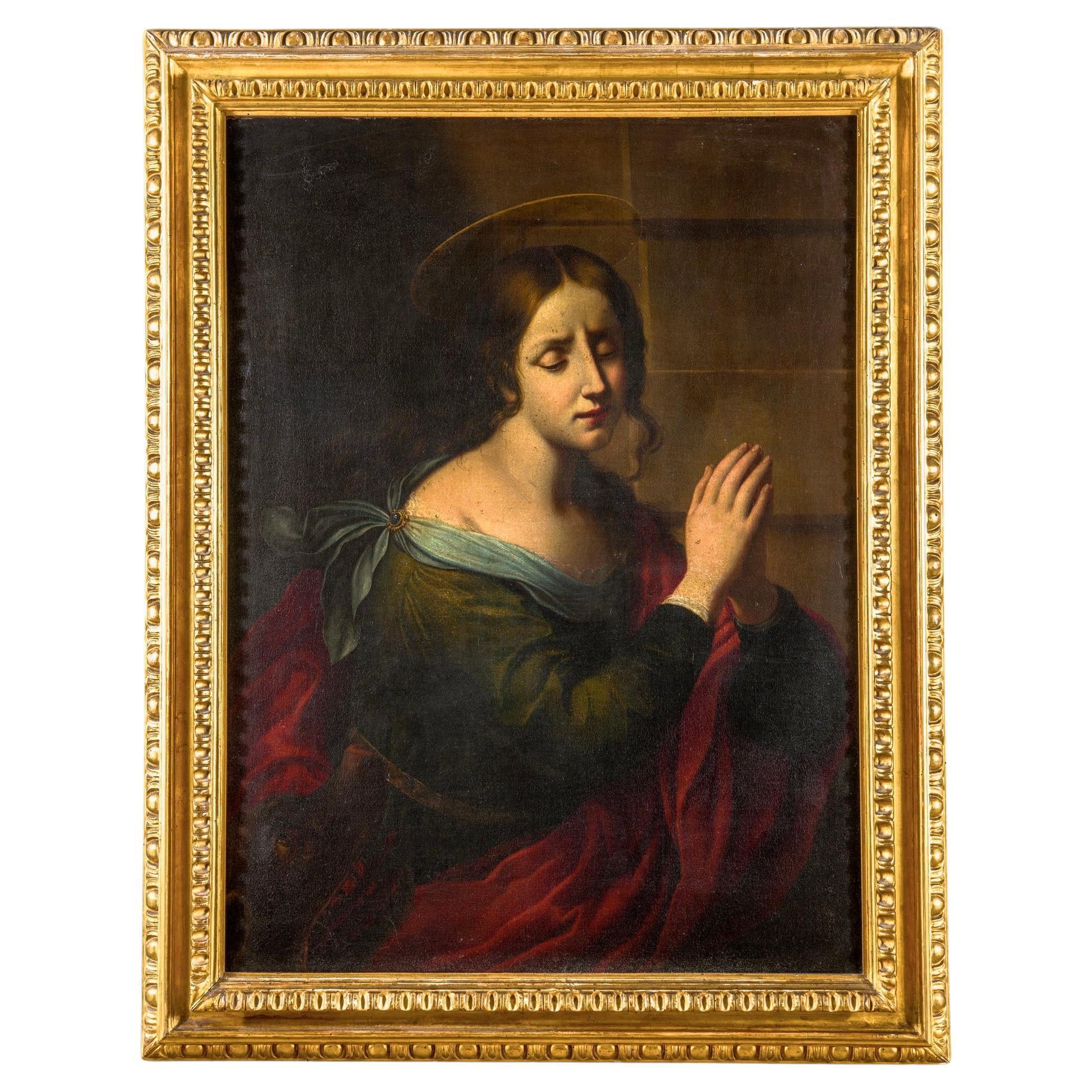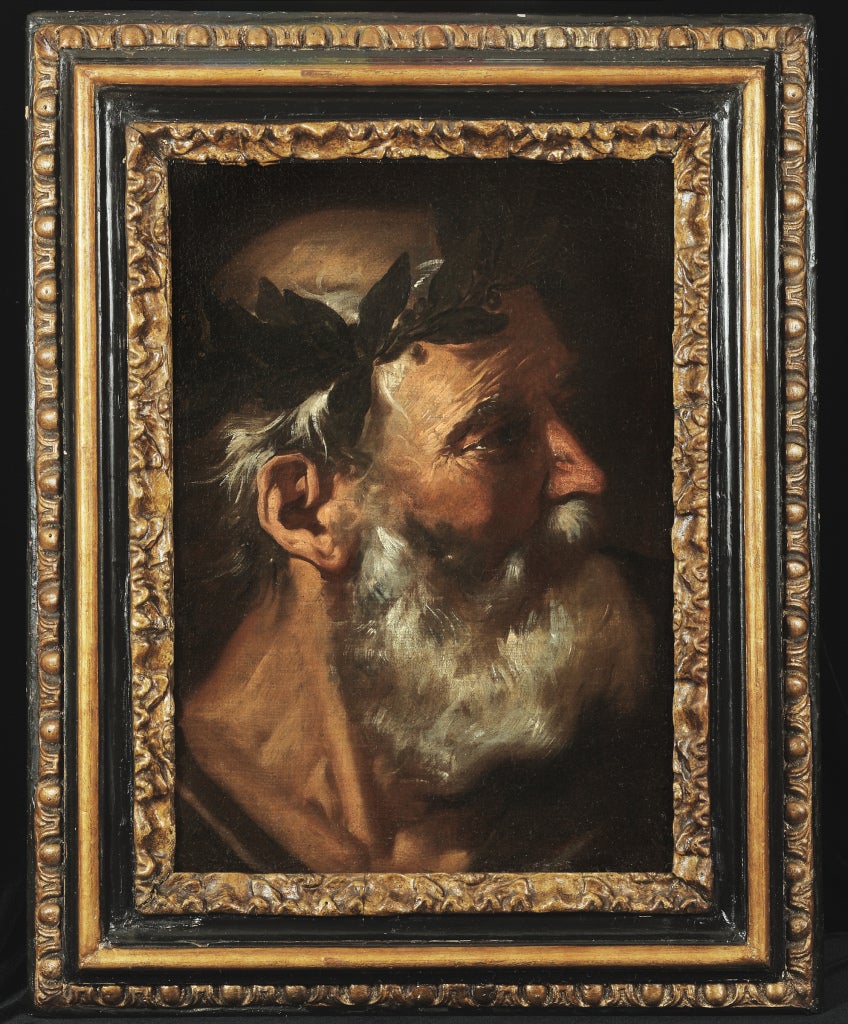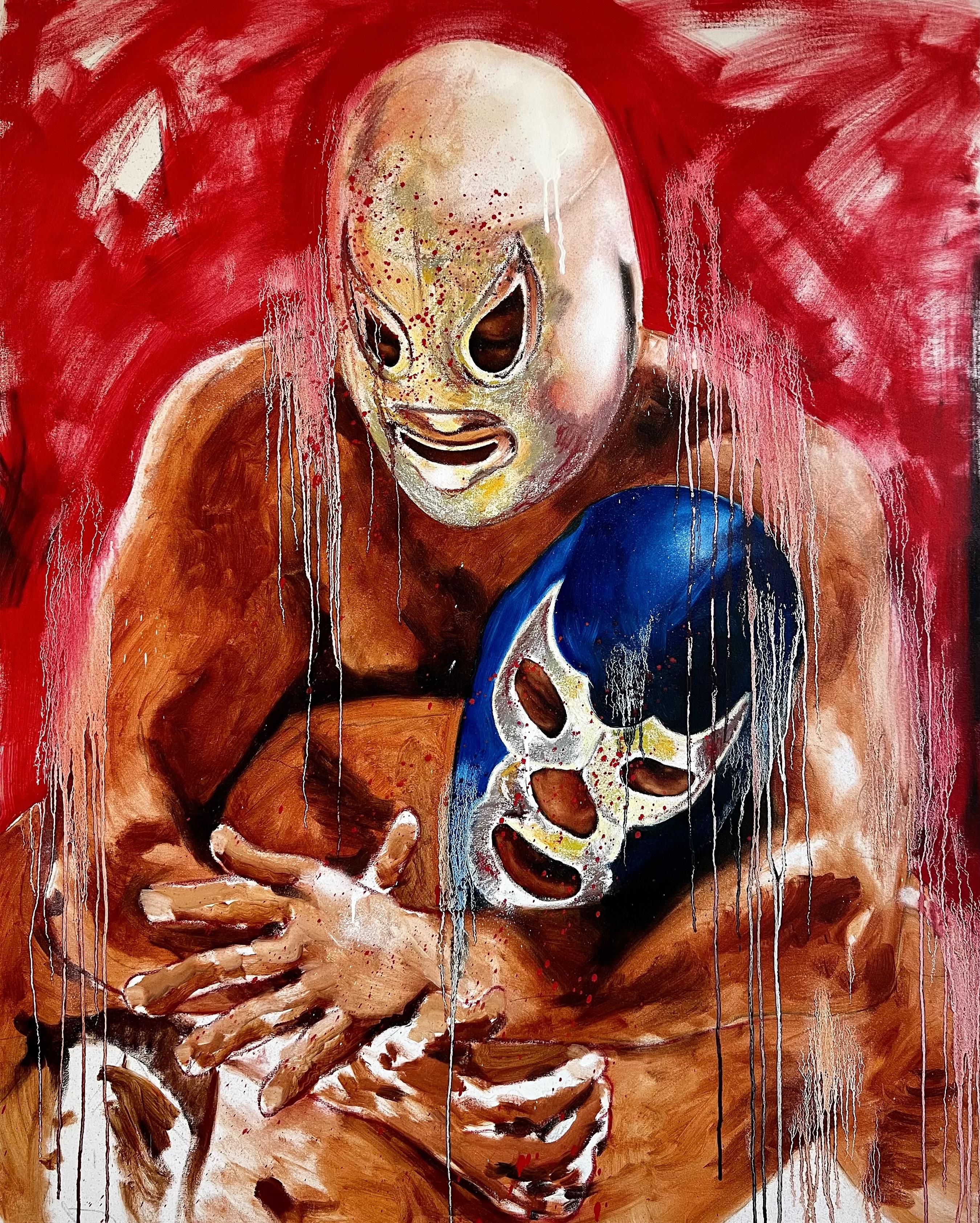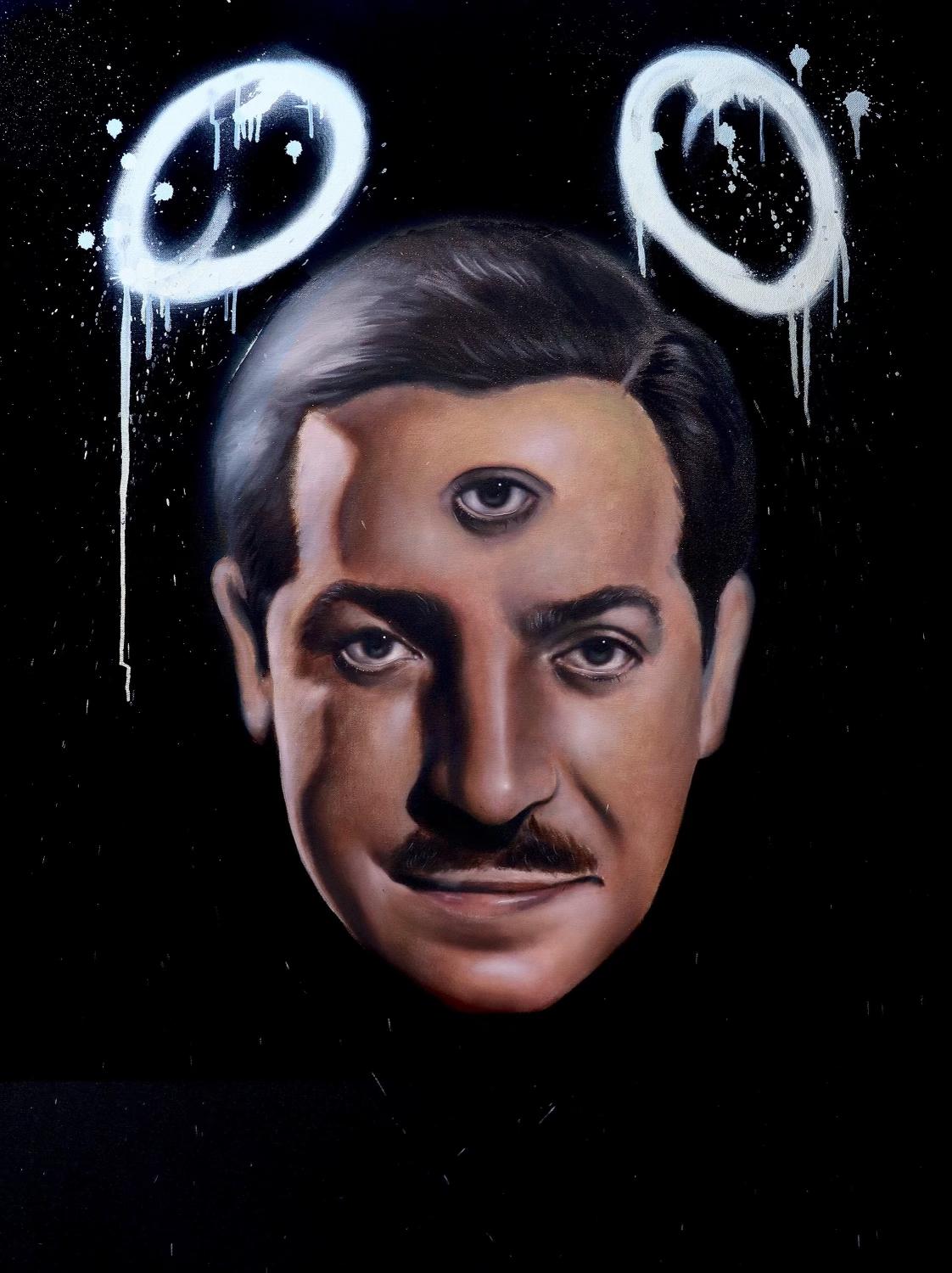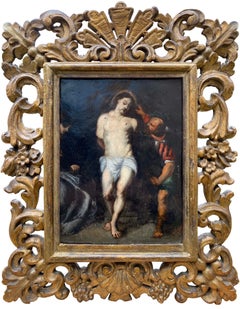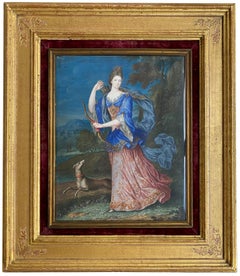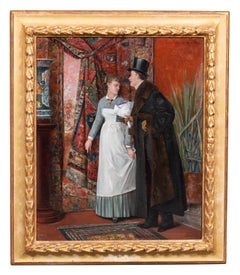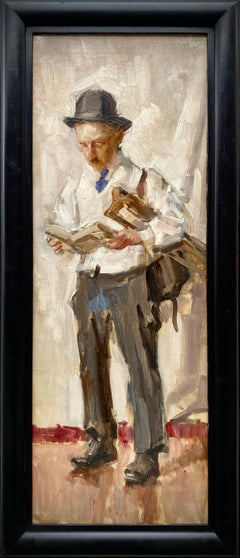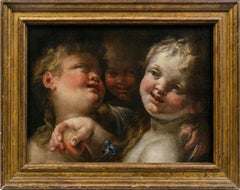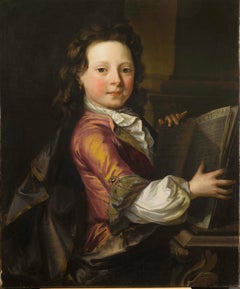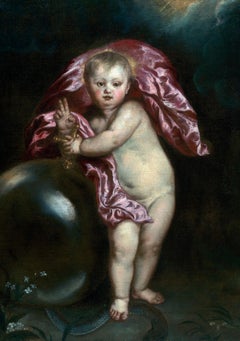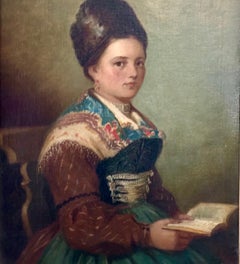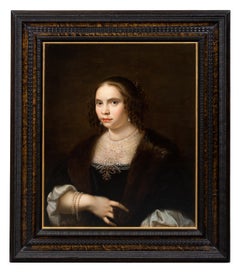
'Portrait of a Lady, circa 1650' by Cornelis Janssens van Ceulen (1593 – 1661)
View Similar Items
Video Loading
Want more images or videos?
Request additional images or videos from the seller
1 of 18
'Portrait of a Lady, circa 1650' by Cornelis Janssens van Ceulen (1593 – 1661)Circa 1650
Circa 1650
$34,470.18List Price
About the Item
- Attributed to:Cornelis Janssens van Ceulen (1593 - 1661, Dutch, British)
- Creation Year:Circa 1650
- Dimensions:Height: 38.19 in (97 cm)Width: 33.47 in (85 cm)Depth: 3.94 in (10 cm)
- Medium:
- Movement & Style:
- Period:Mid-17th Century
- Condition:The artwork is elegantly presented within a beautiful frame, impeccably preserved in its good condition. This piece is showcased in a state suitable for immediate gallery hanging, having undergone professional review.
- Gallery Location:Knokke, BE
- Reference Number:1stDibs: LU2006214751282
About the Seller
5.0
Vetted Professional Seller
Every seller passes strict standards for authenticity and reliability
Established in 1998
1stDibs seller since 2022
29 sales on 1stDibs
Typical response time: 1 to 2 days
Authenticity Guarantee
In the unlikely event there’s an issue with an item’s authenticity, contact us within 1 year for a full refund. DetailsMoney-Back Guarantee
If your item is not as described, is damaged in transit, or does not arrive, contact us within 7 days for a full refund. Details24-Hour Cancellation
You have a 24-hour grace period in which to reconsider your purchase, with no questions asked.Vetted Professional Sellers
Our world-class sellers must adhere to strict standards for service and quality, maintaining the integrity of our listings.Price-Match Guarantee
If you find that a seller listed the same item for a lower price elsewhere, we’ll match it.Trusted Global Delivery
Our best-in-class carrier network provides specialized shipping options worldwide, including custom delivery.More From This Seller
View AllThe Flagellation of Christ, Old Master, Flemish School, Oil on copper
Located in Knokke, BE
The Flagellation of Christ
Old Master
Flemish School
17th century
Medium: Oil on copper
Dimensions: Image size 22 x 17 cm, frame size 39 x 31 cm
Category
17th Century Baroque Portrait Paintings
Materials
Copper
$12,896 Sale Price
30% Off
'Diana, Goddess of the Chase' by Artist 17th Century, French School, Circa 1660
Located in Knokke, BE
Artist 17th Century
French School
Circa 1660
'Diana, Goddess of the Chase'
Signature: not signed
Medium: tempera on paper applied to oak panel
Dimensions: image size 23.5 x 18.5 cm...
Category
17th Century Baroque Portrait Paintings
Materials
Paper, Egg Tempera, Wood Panel
'A Gentleman and a Maid' by Charles Léon Cardon (1850 – 1921) signed, dated 1880
Located in Knokke, BE
Charles Léon Cardon
1850 – Brussels – 1921
Belgian Painter
'A Gentleman and a Maid'
Signature: signed top right and dated ‘Ch. Léon Cardon - 1880’
Medium: oil on canvas
Dimensions...
Category
Late 19th Century Impressionist Interior Paintings
Materials
Canvas, Oil
'Man with a Book' by Jean Laudy, 1877 – 1956, Dutch - Belgian Painter
By Jean Laudy
Located in Knokke, BE
Jean Laudy
Venlo 1877 – 1877 Sint-Lambrechts-Woluwe
Dutch-Belgian Painter
'Man with a Book'
Signature: Signed top right and on revers
Medium: Oil on canvas
Dimensions: Image size 8...
Category
Early 20th Century Impressionist Portrait Paintings
Materials
Canvas, Oil
'Young Girl Knitting' by Guillaume Eberhard (1879 – 1949) signed and dated 1906
Located in Knokke, BE
Eberhard Guillaume
1879 – Maastricht – 1949
Dutch Painter
'Young Girl Knitting'
Signature: signed lower left and dated 'G Eberhard 1906'
Medium: oil on canvas
Dimensions: image siz...
Category
Early 20th Century Romantic Portrait Paintings
Materials
Canvas, Oil
'Dog Protecting His Lunch' by Charles Van Den Eycken ( 1859 – Brussels – 1923 )
By Charles Van Den Eycken
Located in Knokke, BE
Charles Van Den Eycken
1859 – Brussels – 1923
Belgian Painter
'Dog Protecting His Lunch'
Signature: signed lower left and dated 'Ch. Van den Eycken 1899'
Medium: oil on canvas
Dime...
Category
19th Century Romantic Animal Paintings
Materials
Canvas, Oil
You May Also Like
Three Angels
By Domenico Piola the Elder
Located in New York, NY
Provenance:
Robert L. and Bertina Suida Manning, New York, until 1996
Private Collection, USA
One of the leading artists in Genoa during the second half of the seventeenth century, Domenico Piola came from a successful family of artists, renowned for their many illusionistic ceiling programs throughout Genoese churches and palaces. A prolific draughtsman and painter, Domenico oversaw an extremely productive studio. In addition to his collaborations with numerous other artists, Domenico also provided many designs for book illustrations and prints that circulated throughout Europe, earning him international exposure and high acclaim in his own day.
As Dr. Anna Orlando has indicated (written communication), the present work is an early work by Piola, datable from the late 1640s. At this time the young artist came strongly under the influence of Castiglione and Valerio Castello, while admiring the works of Giulio Cesare Procaccini. Piola’s works from this period are exuberant and fluid, and the artist’s love of portraying children is evident from the angels and putti that populate both his altarpieces and more intimate paintings.
The present work depicts three angels...
Category
17th Century Baroque Figurative Paintings
Materials
Canvas, Oil
Portrait of a Boy, John Closterman, Large English Portrait Art, Old Master
By John Closterman
Located in Greven, DE
John Clostermann
(Osnabrück 1660 - 1711 London)
Portrait of a boy, maybe Charles Hinde
Oil on canvas, 61 x 74,6 cm
John Closterman (also Klosterman) was a portrait painter of the late 17th and early 18th centuries. He primarily portrayed English noblemen and European aristocratic families. His father was already an artist and he trained his son. In 1679 he went to Paris and studied with Francois de Troy. In 1681 he was in London and worked for the artist John Riley, whose studio he took over after his death. In 1696 he was invited to the Spanish court...
Category
17th Century Baroque Figurative Paintings
Materials
Canvas, Oil
Christ as Salvator Mundi, Circle Van Dyck, Flemish Old Master, Christ Child
By Anthony van Dyck
Located in Greven, DE
The Christ Child as Redeemer of the World
Oil on Canvas, 69.3 x 49.7 cm
Provenance
Private Collection, Belgium
The present painting is known in different versions. One of them is ...
Category
17th Century Baroque Figurative Paintings
Materials
Canvas, Oil
Eastern European Mannerist Portrait, woman in traditional dress
Located in Hillsborough, NC
Eastern European young woman in traditional dress with silver lacings and jewelry holding an open book. This portrait pose is in the Renaissance period Mannerist style, and the young...
Category
17th Century Mannerist Portrait Paintings
Materials
Oil, Canvas
$1,885 Sale Price
35% Off
Neapolitan caravagist artist, 17th century SAINT THOMAS APOSTOLE
By Hendrick de Somer
Located in Tricase, IT
Neapolitan caravagist artist, 17th century
SAINT THOMAS APOSTOLE
oil on canvas, cm 127x101
(The painting is part of a triptych together with the two holy apostles Saint James the Mi...
Category
1620s Baroque Figurative Paintings
Materials
Canvas, Oil
Oil On Canvas Self Portrait of the artist Sir Anthony Van Dyck 18Th c
Located in Gavere, BE
"Oil On Canvas Self Portrait After Sir Anthony Van Dyck"
Follower of Sir Anthony van Dyck (Flemish painter, 1599-1641), Self portrait Oil on canvas (doubled),
Probably end 18th centu...
Category
Late 18th Century Baroque Figurative Paintings
Materials
Gold Leaf
Recently Viewed
View AllMore Ways To Browse
Tudor Tapestry
Miniature Portrait Case
Antique Picture Frames 1800S
Antique Tapestry Pictures
Flemish Blue Tapestry
Scottish Pearl
Pearl 3 Strand Bracelet
Jansen Oil
Painting 1643
5 Strand Pearl Bracelet
Antique Human Bones
Tudor Oil Painting
Royal Costume Jewelry
Miniature Rembrandt
Antique Scottish Pearls
Portrait Miniatures 1800s
Swedish Portrait 17th Century
Miniature 17th Century Portraits
